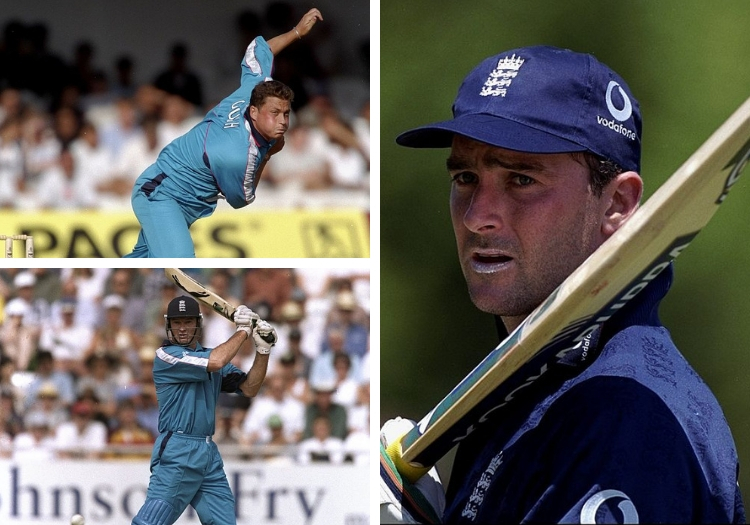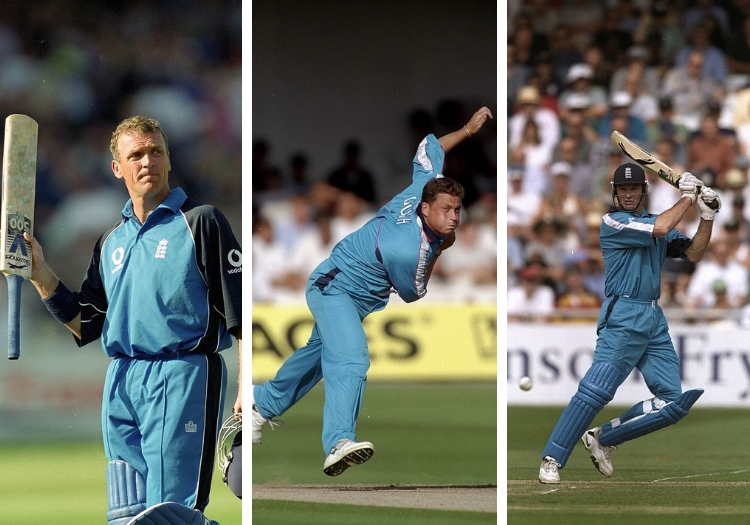Before the 1992 tournament began, Vic Marks – the former England allrounder – assessed the team's chances for the May 1999 edition of The Cricketer

May 1999
England’s 1999 World Cup campaign was a disaster. After losing a crucial match to India, the hosts crashed out at the very first hurdle – exiting the competition before the official World Cup song even came out. It was a disastrous end to a nightmare nineties for England, who failed to beat either the West Indies or Australia in a Test series during the decade.
Before the tournament began, Vic Marks – the former England all-rounder – assessed the team’s chances for the May 1999 edition of The Cricketer.
Any English optimism can only be based on the fact that they enjoy home advantage. In three World Cups in this country, England have always progressed as far as the semi-finals. Alec Stewart’s side will have done well if they get that far in 1999.
To succeed they are dependent upon their ability to exploit their specialist knowledge of the venue. It would help their prospects if conditions are typically spring-like. If there is plenty of moisture around, the English players’ experience of dealing with the mischievous white ball in May should be decisive in early games. In particular, they hope that seam bowlers rather than spinners will predominate when they launch the competition at Lord’s against Sri Lanka on May 14.
They have to be ultra-professional; disciplined with the ball and ruthlessly efficient with the bat, because man-for-man there are several more talented sides in the competition. The selectors have put their trust in cagey old campaigners rather than raw youth (when the squad was chosen Andrew Flintoff was the only uncapped player and the only one under the age of 27). Even so, they have gambled in several of their selections.
The original decision to pick Mike Atherton, Graham Thorpe and Neil Fairbrother, three gnarled and classy batsmen, may not have sounded like a gamble until you examined their recent medical history. Indeed, Atherton was forced to withdraw as soon as he arrived in Lahore for the preparation for the Sharjah tournament. After two long air flights his back rebelled again. Even so, this ageing squad will keep the England physio on his toes. For example, Fairbrother’s hamstrings sometimes twang at the thought of a 50-yard dash.

'Three to watch'
Atherton was replaced by Nasser Hussain, who was miffed to have been left out in the first place. By opting for Hussain, the selectors stuck to the theory that it would be a relatively low-scoring tournament and that the batsman would require traditional Test match values to succeed.
The selectors did not adhere to this theory when choosing their bowlers. They have picked just three out-and-out specialist pacemen – Darren Gough, Alan Mullally and Angus Fraser – who will be augmented by a selection from no fewer than five mini all-rounders of various shapes, sizes and qualities. Ian Austin and Mark Ealham can be classified as the bowling all-rounders; Adam Hollioake, Vince Wells and Flintoff as the batting all-rounders.
While the presence of two or three of these names on the scorecard hints at a formidable depth of batting, it would have been better to include an additional specialist bowler in the squad, like Dean Headley, who is also a high-class fielder, rather than yet another bits and pieces player. If Gough can make early inroads on helpful pitches and reduce the opposition to 40 for 4, then the presence of someone to drive the advantage home, rather than keep it tight at military medium, is crucial. I fear that too much emphasis has been put upon the craving for one-day all-rounders. It means that in the field, Stewart may have plenty of bodies capable of propelling the ball, but there will be little variety of penetration available when he needs to conjure up a wicket.
It is in the field that England could be most embarrassed. Narrowly excluded from the squad are England’s outstanding fieldsmen – Mark Rampraskash, Headley and Chris Lewis are the obvious absentees. This leaves Stewart with just two gazelles, Nick Knight (and he was hampered by a dodgy knee in Australia) and Hussain, a posse of complements (Graeme Hick, Mark Ealham, Thorpe et al) and several carthorses by modern standards (we know who they are). And in the modern game, there’s little scope to hide anyone.
After six tournaments five sides have been World Cup winners – and England are not among them. Realistically, a semi-final birth is the best we can hope for and this would constitute a successful campaign.
But as every underdog always proclaims, and as Alec Stewart and David Lloyd will reiterate to their men if England are still in the tournament on June 15 when the first semi-final takes place in Manchester, once you reach that stage of a competition anything is possible. Progressing that far will be the problem.
This article was published in the May 1999 edition of The Cricketer - the home of the best cricket analysis and commentary, covering the international, county, women's and amateur game
To subscribe for just £44.99 per year, click here